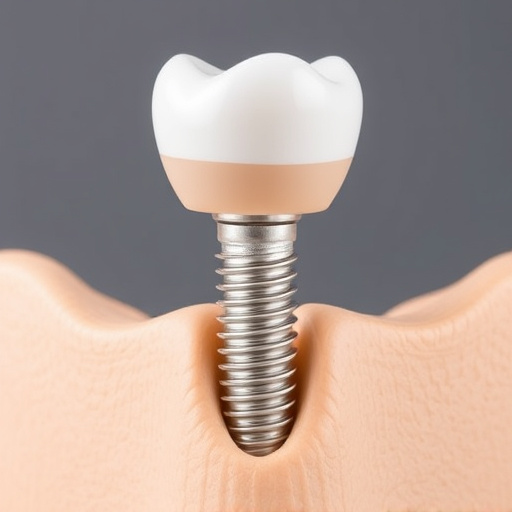In the digital age, designing mobile-friendly medical websites is crucial for healthcare providers to enhance SEO and user experience. Key elements include touch-friendly interfaces, responsive menus, fast loading times, and easy navigation. An integrated online scheduling system, optimized for mobile users, improves patient accessibility and satisfaction. A user-centric design approach, adhering to WCAG guidelines, ensures accessibility. Optimizing with keywords like "mobile-friendly website design" boosts visibility and traffic, making it a valuable asset in the medical landscape.
In today’s digital era, a mobile-friendly website design is crucial for medical practices to thrive. With an increasing number of patients accessing healthcare services online, understanding mobile users’ expectations is key. This article explores how effective online scheduling systems can enhance patient experience and accessibility. We delve into the essential elements that contribute to seamless scheduling, while also highlighting best practices for user experience, ensuring your medical website design keeps up with modern demands.
- Understanding Mobile Users and Their Expectations
- Key Elements for Seamless Online Scheduling System
- Best Practices for User Experience and Accessibility in Medical Websites
Understanding Mobile Users and Their Expectations

With the majority of internet users accessing websites through mobile devices, designing a medical website that accommodates this behavior is essential for any healthcare provider looking to improve Google search rankings. A mobile-friendly website design isn’t just about ensuring your site is accessible on smartphones and tablets; it’s about providing an optimal user experience tailored to these smaller screens. This includes fast loading times, easy navigation, and clear content presentation, all of which positively impact SEO audit services and can enhance a clinic’s online visibility.
Understanding mobile users’ expectations is key to achieving this. They often prefer simplicity and straightforward information access. Features like touch-friendly interfaces, optimized buttons for tap gestures, and responsive menus that adapt to different screen sizes are crucial. Additionally, considering the variety of devices and network conditions users might be on, ensuring your website remains functional and visually appealing across the board is vital. Engaging mobile patients through a well-designed website can lead to better patient retention and increased trust, making it a valuable asset for any healthcare business, as highlighted by the growing demand for SEO consultant near me services focused on mobile optimization.
Key Elements for Seamless Online Scheduling System

A seamless online scheduling system is a cornerstone of any modern medical practice’s website. When designing for this functionality, several key elements must be considered to ensure a smooth user experience across various devices. The first step is to implement a robust and secure booking platform that allows patients to easily view available time slots and select the one that suits them best. This platform should be mobile-friendly, as many users now access healthcare services via their smartphones, making it crucial for web design Dallas experts to prioritize responsive design.
Additionally, integrating this scheduling system with your practice’s existing software, such as patient records management or billing systems, is essential. This synchronization ensures data accuracy and saves time for both patients and administrators. An SEO company Plano can help optimize these features, improving visibility and accessibility for local searchers looking for medical services in Broward County. Ultimately, a well-designed online scheduling system not only streamlines appointments but also enhances patient satisfaction and engagement.
Best Practices for User Experience and Accessibility in Medical Websites

Creating a medical website that supports online scheduling requires a keen focus on user experience (UX) and accessibility to ensure it caters to a wide range of users, from patients booking appointments to healthcare professionals managing their schedules. Best practices in UX involve intuitive navigation, clear call-to-actions, and consistent design elements across all pages. A mobile-friendly website design is paramount, given the growing number of users accessing healthcare services via smartphones and tablets. This includes responsive layouts that adapt seamlessly to different screen sizes and touch interactions.
Accessibility should be a core consideration in medical website design. Following Web Content Accessibility Guidelines (WCAG) ensures that your site is usable by individuals with disabilities. Incorporate features like alt text for images, captions for videos, and keyboard navigation to support users who rely on assistive technologies. Additionally, leveraging local citation services and optimizing SEO strategies with a focus on relevant keywords—including “mobile-friendly website design” and “SEO consultant near me”—can significantly increase website traffic and visibility, enhancing the overall reach and effectiveness of your medical online presence.
A well-designed, mobile-friendly website with an integrated online scheduling system is no longer a luxury but a necessity for medical practices. By understanding mobile users’ expectations and implementing key elements for a seamless scheduling experience, healthcare providers can enhance accessibility, improve patient satisfaction, and ultimately foster stronger patient relationships. Adhering to best practices for user experience ensures that patients of all abilities can easily navigate and schedule appointments, making your medical website an effective tool in modern healthcare.














